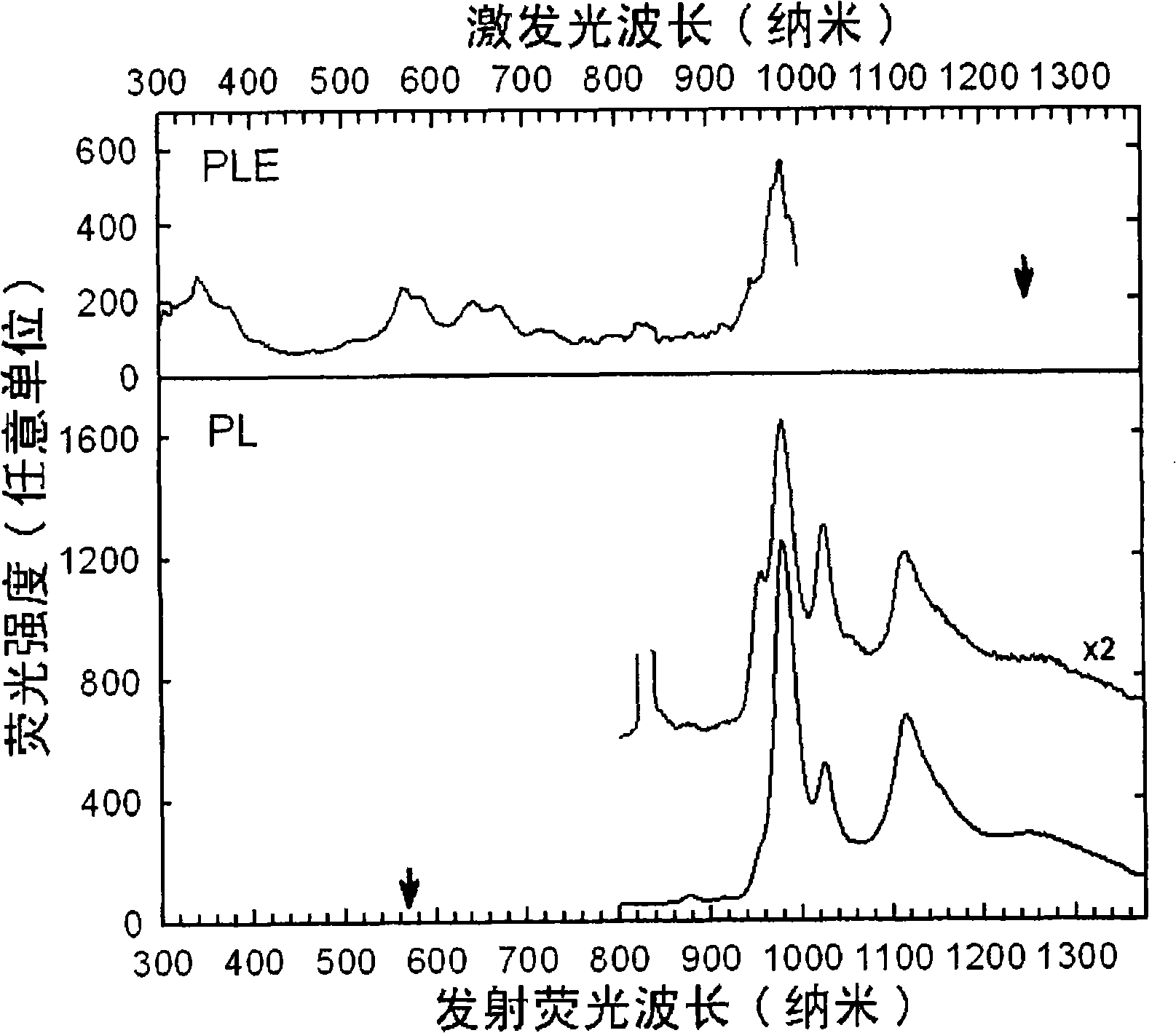Method for enhancing light-emitting efficiency of semiconductor type carbon nano-tube
A technology of carbon nanotubes and luminous efficiency, applied in semiconductor devices, electrical components, circuits, etc., can solve problems such as the luminous efficiency that cannot be achieved through carbon nanotubes
- Summary
- Abstract
- Description
- Claims
- Application Information
AI Technical Summary
Problems solved by technology
Method used
Image
Examples
Embodiment Construction
[0019] A method for improving the luminous efficiency of semiconducting carbon nanotubes, the method comprising:
[0020] Prepare carbon nanotube bundles containing semiconducting carbon nanotubes with different band gaps; the carbon nanotube bundles are all composed of semiconducting carbon nanotubes, or contain a small amount of metallic carbon nanotubes;
[0021] Wherein the method for preparing carbon nanotube bundles comprises:
[0022] a) Combining different carbon nanotubes into carbon nanotube bundles by using micromachines;
[0023] b) direct growth of carbon nanotube bundles using physical and chemical methods;
[0024] c) Dissolving carbon nanotubes into chemical reagents, separating and obtaining carbon nanotube bundles of different sizes by chemical and physical methods
[0025] The carbon nanotube bundle is prepared into a light-emitting device, and the excitation light that is close to or equal to the band gap of the wide bandgap semiconductor carbon nanotube ...
PUM
 Login to View More
Login to View More Abstract
Description
Claims
Application Information
 Login to View More
Login to View More - R&D
- Intellectual Property
- Life Sciences
- Materials
- Tech Scout
- Unparalleled Data Quality
- Higher Quality Content
- 60% Fewer Hallucinations
Browse by: Latest US Patents, China's latest patents, Technical Efficacy Thesaurus, Application Domain, Technology Topic, Popular Technical Reports.
© 2025 PatSnap. All rights reserved.Legal|Privacy policy|Modern Slavery Act Transparency Statement|Sitemap|About US| Contact US: help@patsnap.com

